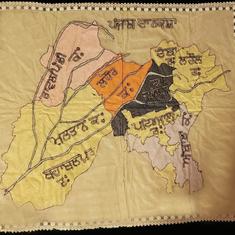Music is a mongrel thing. We delude ourselves when we think in terms of purity and discrete genres. In actuality, music is – in the words of Bob Dylan – just "mixed up confusion". Just like the human race, which invented it.
African rhythms travelled across the Atlantic in slave ships to the New World where they were mixed with immigrant melodies from Iberia. Hundreds of years later, these multi-coloured sounds were carried back to Africa on radio where West and Central African musicians moulded them into something called rumba. Over a decade or two, rumba’s uniquely African-Latin-African sound transmogrified again into the lilting, intoxicating Congolese soukous.
The beautiful music of Harry Manx, a Canadian blues guitarist, has a similar back and forth history. The American slide guitar, so identified with the blues, came to India where, much to the horror of traditionalists, it was reconfigured to play classical music. Several decades later the Canadian, Manx, learnt how to play the Mohan veena – the Indianised slide guitar – before returning to Canada to play a new strain of the blues.
Manx’s story begins in southern Ontario, a part of the world more famous for ice hockey than music. A move to Toronto, where he shared cheap lodgings with a rock band sparked an inner flame and led young Harry to pick up the guitar. Which in turn led to work at a blues bar where he mixed the sound for Muddy Waters, Hound Dog Taylor, BB King and other giants of the blues. He admits to being smitten by the clothes, swagger and cool of the blues crowd but most of all he found himself completely hooked on the music.
Somewhere in those early years he happened upon a recording of Ravi Shankar, which cracked open "a whole new world". Bewitched by the strange sounds and intrigued by stories of India brought back by his father, a sailor in the merchant navy, India became what Manx terms "a purpose". An initial visit in the late 1970s turned out to be just a teaser – he returned in 1986 and stayed for the next 12 years taking instruction in the Mohan veena from the instrument’s inventor, Pt Vishwa Mohan Bhatt.
The apprenticeship with Bhatt was rigorous. He confessed that in order to learn the Mohan veena, he had to unlearn virtually everything he had learned to that point about playing slide guitar. In particular, it was mastering the way in which Indian music placed and ordered notes within the raga that proved to be the greatest challenge.
India and the Mohan veena may have been Manx’s purpose, but the blues were in his blood. In the years with Bhatt he immersed himself in Hindustani classical music but also heard what he thought was a version of the music he loved so passionately. In the bending of the strings, be it of the sitar or veena, Manx heard echoes of the blues and soon he began experimenting with mixing the two styles.
Manx understood that this was not as easy as it sounded. Generally, Indian classical music draws the listener inward, to realms of personal reflection. The blues, on the other hand is all about external movement, dance and self-expression. But as all of this week’s selections demonstrate, Manx has been able to capture the essence of both traditions beautifully while creating a unique sound that is simultaneously fresh and familiar.
In this gorgeous interpretation Manx buries the blues deep in the soul of the music and gives a thrilling demonstration of the versatility and musicality of the Mohan veena.
At the heart of every blues is a stark sense of solitude. You, standing alone against the world. Manx has been able to express that fundamental loneliness as well as blend in the shimmering otherworldliness of Indian strings to create an "essential link" between raga and the blues. As he shows in this cover of Van Morrison’s classic hit, his special magic is able to transform not just the blues but virtually any well-worn song into something that sparkles and glows with new life.










